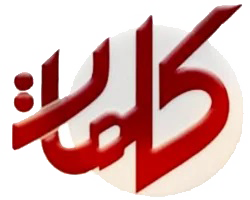
Author: Obaidullah Noorzahi
Islam in Europe (The 17th and Final Part)
Northern Europe
In Northern Europe, Muslims enjoy relative freedom and are recognized as a religious community in most countries. However, Christian propaganda against Islam is also very active in these regions.
Norway
Norway, located in the western part of the Scandinavian Peninsula, with an area of 323,878 square kilometers, is known as the “country of a thousand bays” due to the presence of numerous bays. With a population of 4.2 million, the country has only about 30,000 Muslims, half of whom are of Pakistani descent. Muslims in Norway enjoy relative freedom to practice their religious rituals, and the government has provided the necessary facilities for establishing mosques and centers of worship. The translation of the Quran into Norwegian has also been an important cultural initiative for Muslims in this country.
Sweden
Sweden is located on the Scandinavian Peninsula, adjacent to the Gulf of Bothnia and the Baltic Sea. The country, with an area of 449,964 square kilometers, has a predominantly Lutheran population. In 1971, only 17,000 Muslims lived in Sweden, but this number has increased to about 50,000 today. Muslims in Sweden were not recognized until 1979, but this recognition was achieved after negotiations with the government.
Mosques and Quranic schools are the main centers of Muslim religious activity in Sweden. However, Muslim children from low-income families are often targeted by Christian propaganda. The country’s “child care” law places Muslim children under the protection of Christian families and supervises them through the Church of Sweden.
This situation reflects the challenges facing Muslims in Western societies—challenges that are being addressed through the resistance and cultural and religious activities of the Islamic community.
Finland
The Republic of Finland, with an area of 338,145 square kilometers, is located on the eastern coast of the Baltic Sea and the Gulf of Bothnia. The country consists of 12 provinces, and its capital is Helsinki. Finland has a population of 4.95 million, 97% of whom are Lutherans. Most Finns are of fair skin and Ural and Altaic descent, with a small minority of Swedes residing in the country.
In the late 19th century, a group of Turkish Muslims from the Muslim republics of Central Asia migrated to Finland for trade and eventually settled there. After the October Revolution of 1917 and the rise of Marxists, the connection of Finnish Muslims with their homeland was severed. The population of Finnish Muslims, which was only 1,500 in 1968, has now increased to about 5,000, with most being immigrants from the former Soviet Union.
Dr. Inamullah Khan, President of the World Islamic Conference, has announced that the growth rate of the Muslim population in Finland is continuously increasing. In 1925, the Muslim Tatar community was formed in Finland, and the government recognized it and provided them with the necessary social and welfare facilities. Finnish Muslims, who are mostly active in fields such as commerce, banking, and services, are in a good financial position. They have built five mosques in various cities, including Helsinki and Tampere, and have formed religious groups in Kotka, Turku, and Järvenpää.
Denmark
Denmark is a small country with an area of 43,092 square kilometers, which includes a peninsula and numerous islands. It is separated from Norway and Sweden by the Skagerrak and Kattegat straits and is governed by a constitutional monarchy. Denmark has a population of about 5.134 million, 98% of whom are Lutherans (Protestants). The center of government in Denmark is the port city of Copenhagen, located on the shores of the Baltic Sea.
Denmark has a larger Muslim population than any other country in Northern Europe, with a population of about 52,000. In 1971, this number had increased to about 16,000, and in 1982, to 35,000. Most Danish Muslims are immigrants from Turkey, Pakistan, Bangladesh, the former Yugoslavia, and other countries in South and West Asia. About 10,000 Muslims hold Danish citizenship.
In addition to being workers, Muslims in Denmark also engage in low-level business jobs. Although the Danish government has treated Muslims better in recent years, it still does not officially recognize Islam, and Muslims are influenced by social prejudices and Christian propaganda. Nevertheless, Islam is expanding in Denmark, and Muslims are working hard to promote the religion and strengthen the faith of their children.
In 1970, the Danish government provided Muslims with a 27,000-square-meter plot of land to build a mosque and a cultural center. Located in Copenhagen, the center was built with financial support from Arab countries. The Danish Muslim community operates under the supervision of the Muslim Union and its branches.
In Danish public schools, Muslim children receive Islamic education from teachers selected by the Islamic community, with their salaries paid by the government. Mosques and religious places are also used as centers for religious preaching and education.
Cultural and Social Activities of Muslims in Denmark:
1. Islamic Youth Center: This center was established in 1976, aimed at improving the cultural level of Muslim youth and organizing them. It supervises Muslim kindergartens and Arabic-Islamic schools.
2. Vesterbro Mosque: One of the important mosques in Denmark where Friday prayers are held.
3. Islamic Publications: The Islamic Youth Center used to publish a magazine called “Sirat,” which is now closed. The Amani Library, founded in 1980, published a magazine called “Wahdat.” The Islamic Propaganda Circle was founded in 1981 and published the magazine “Islamic Perspective.”
4. Islamic Bookstores: These centers have been operating in Denmark since 1973 and promote Islamic teachings.
Despite many problems and challenges, Danish Muslims continue to strengthen the cultural and religious foundations of their society with determination and effort.
Continues…


